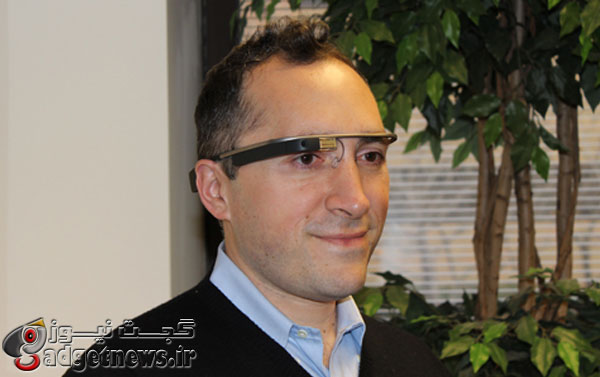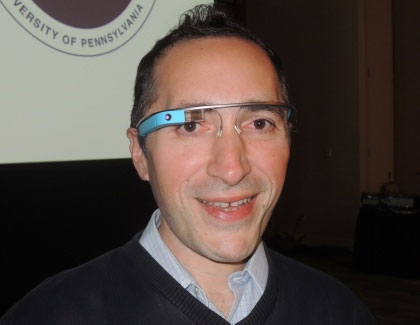
هر کسی نظری خاص راجع به محصول پوشیدنی گوگل، یعنی «گوگل گلس» دارد؛ محصولی که تلاش کرده نزدیکترین فاصله را میان چشم و ذهن شما با کامپیوتر ایجاد کند، گاه با نقدهای به شدت تند و گاه با تمجید منتقدان دنیای تکنولوژی و فشن مواجه میشود.
مردم دنیا به شکل عجیب و فزاینده ای در حال عبور از کامپیوترهای دسکتاپی و خوگرفتن با اسمارتفون ها و تبلت ها هستند؛ آمار منتشر شده در روز گذشته نیز نشان میدهد که سال 2015 میزان فروش اسمارتفون و تبلت از پیسی پیشی خواهد گرفت. گوگل گلس اما یک نسل جلوتر از خود قرار دارد و حرف و حدیثهای پیرامون آن و آیندهنگری کمنظیر گوگل نشان از گسترش بیش از پیش این محصول در میان مردم دارد.
|
بابک پرویز خالق گوگل گلس و یکی از رهبران اصلی تولید این پروژه، گوگل گلس را جوابی تقریبا مطمئن به آینده دنیای تکنولوژی میداند. وی که در کنفرانس تکنولوژیهای گجت پوشیدنی سخنرانی میکرد از تولد گوگل گلس و دورنمایی که برای آن میبیند سخن گفت.
از روزی که عینک گوگل در کنفرانس توسعهدهندگان این شرکت در سال 2012 معرفی شد و پس از آن به میان مردم راه پیدا کرد با حرف و حدیثها و البته مخالفتهای بسیار جدی مواجه شده است. از عدم اجازه استفاده در تعدادی از مراکز خرید آمریکا بگیرید تا سالنهای سینما و حتی گاه استفاده از چنین گجتی موجب درگیریهای فیزیکی نیز شده است.
ماه گذشته آقای پرویز جایگاه خود در مدیریت تیم سازنده را ترک و آن را به یک مدیر اهل فشن و مد به نام آیوی راس تحویل داد تا وی سعی و تلاش جدیدی را برای جاانداختن بیشتر این محصول در میان مردم و کاهش انتقادات بر عهده داشته باشد.
علارغم تمام انتقادات و گرفتاریهایی که گوگل در پی عرضه این محصول داشت، پرویز اما به آینده این محصول بسیار خوشبین است و اعتقاد دارد: «حدس من این است که 15 سال دیگر، اگر به مردم پیادهروها نگاه کنید، آنها حتما یک گجت پوشیدنی بر روی سر خود قرار داده اند.»
وی در این کنفرانس همچنین از مراحل آغازین این پروژه نیز برای نخستین بار جزئیاتی را مطرح کرد. جالبترین آن شاید شباهت نسخه اولیه گوگل گلس به محصول واقعیت مجازی آکیولس، یعنی آکیولس ریفت باشد!
پرویز در ادامه به یکی از تلاشهای مهم تیم سازنده در فرآیند تولید این گجت اشاره میکند. یکی از مواردی که بسیار مورد توجه قرار داشت، قابلیت جستجو و یافتن اطلاعات در کسری از ثانیه در این دستگاه بود. موتور جستجوی گوگل در حال حاضر در کمتر از 10 ثانیه جواب جستجوی شما را پیدا میکند، اما هدف گوگل به گفته پرویز جاهطلبانهتر بود: «هدف ما در عینک گوگل رساندن این زمان به پایینترین حد ممکن بود. سؤال این بود که آیا میتوانیم این زمان را به سه ثانیه برسانیم، یا شاید یک ثانیه؟ یا در کسری از ثانیه؟!»

اما ورای تمامی منفعتهای این گجت، خالق گوگل گلس نیز از خطرات و سوء استفادهکنندگان از این دستگاه آگاه است: «همزمان با رواج این تکنولوژیها، شاهد رفتارهای جدیدی نیز از سوی تعدادی از مردم خواهیم بود. واضح است که باید تناسبی میان آنچه تکنولوژی به ما اجازه میدهد و آنچه نمیدهد، وجود داشته باشد.»
او در انتها تأکید کرد که این محصول هنوز راه درازی دارد و بدون شک در آینده تغییراتی را به خود خواهد دید. از دید پرویز، فراهم ساختن راحتی بیشتر برای کاربران و مصرف پایینتر انرژی از قدمهای بعدی برای عینک گوگل برآورد میشود.
لازم به ذکر است که آقای پرویز علاوه بر همکاریهای گسترده در تولید گوگل گلس، در تولید لنزهای پر سر و صدای چشمی تشخیص میزان گلوکز این شرکت نیز نقشی بسیار مهم داشته است.
منبع : cnet
Babak Parviz, a Google X director who led development of the product, talks about the beginnings of Glass, and where he hopes it will go.
SAN FRANCISCO — It seems like everyone’s got an opinion on Google Glass, the search giant’s ambitious connected headset that mounts a computer in front of a user’s eyes. But on Tuesday, we heard from someone with special credentials — the device’s creator said Glass is only one answer to the future of computing.
People are increasingly moving away from desktop computers and latching on to smartphones and tablets, and Glass was born from trying to figure out where the next great platform shift would take us.
“Google Glass is one answer to that question,” said Babak Parviz, a director at Google X, at the Wearable Technologies Conference here. “It’s not necessarily the definitive answer.”
Parviz has had a leading role in the development of some of Google’s most ambitious projects. He ran the team behind Glass until last month, and also heads up the effort behind a glucose-tracking contact lens, aimed at helping diabetics who must prick themselves with needles to check their blood sugar.
Still in its prototype days — though available to the general public — Glass has already seen its share of obstacles. The company has slowly rolled out the product since its introduction at Google’s developer conference in 2012.
It’s been at the center of some controversy, including being banned from some bars in the U.S. and prohibited from movies theaters in the United Kingdom because of privacy and piracy concerns. Last month, Google replaced Parviz as the head of the Glass project with a more fashion-forward executive, Ivy Ross, formerly chief marketing officer of Art.com. Ross has held executive tenures at Calvin Klein, Coach, and the Gap.
But Parviz still has faith in connected headsets. “My guess is, 15 years from now, walking down the street, there will be people walking around with something on their head.”
Parviz, who appeared on stage sans-Glass, ran through some of Glass’ early development, even highlighting an early version of the hardware that looked more like Facebook’s chunkier Oculus headset than the thin-rimmed shape it currently has.
One of the main drivers for developing the device was being able to find information almost instantaneously. A Google search will give someone a reasonable answer to almost any question in about 10 seconds, he said. The goal for Glass was to “significantly shorten that time.” “Can we make it three seconds? One second? A fraction of a second?” he said.
But for all the possible benefits, Parviz is still aware of the danger of making these next-gen devices alienating experiences. “As these technologies set in, some of the humanity comes out,” he said. “There’s a balance between what technology allows and what technology takes away.”
He emphasized that the product still has a long way to go, mentioning that the form factor of the device would evolve. He said future efforts for the product would be centered on making them more comfortable to wear, and allowing them to operate using less power.
“This is a nice first step to where we want to go,” he said. “We can see glimmers of how this might work out.”
 گجت نیوز آخرین اخبار تکنولوژی، علم و خودرو
گجت نیوز آخرین اخبار تکنولوژی، علم و خودرو 






